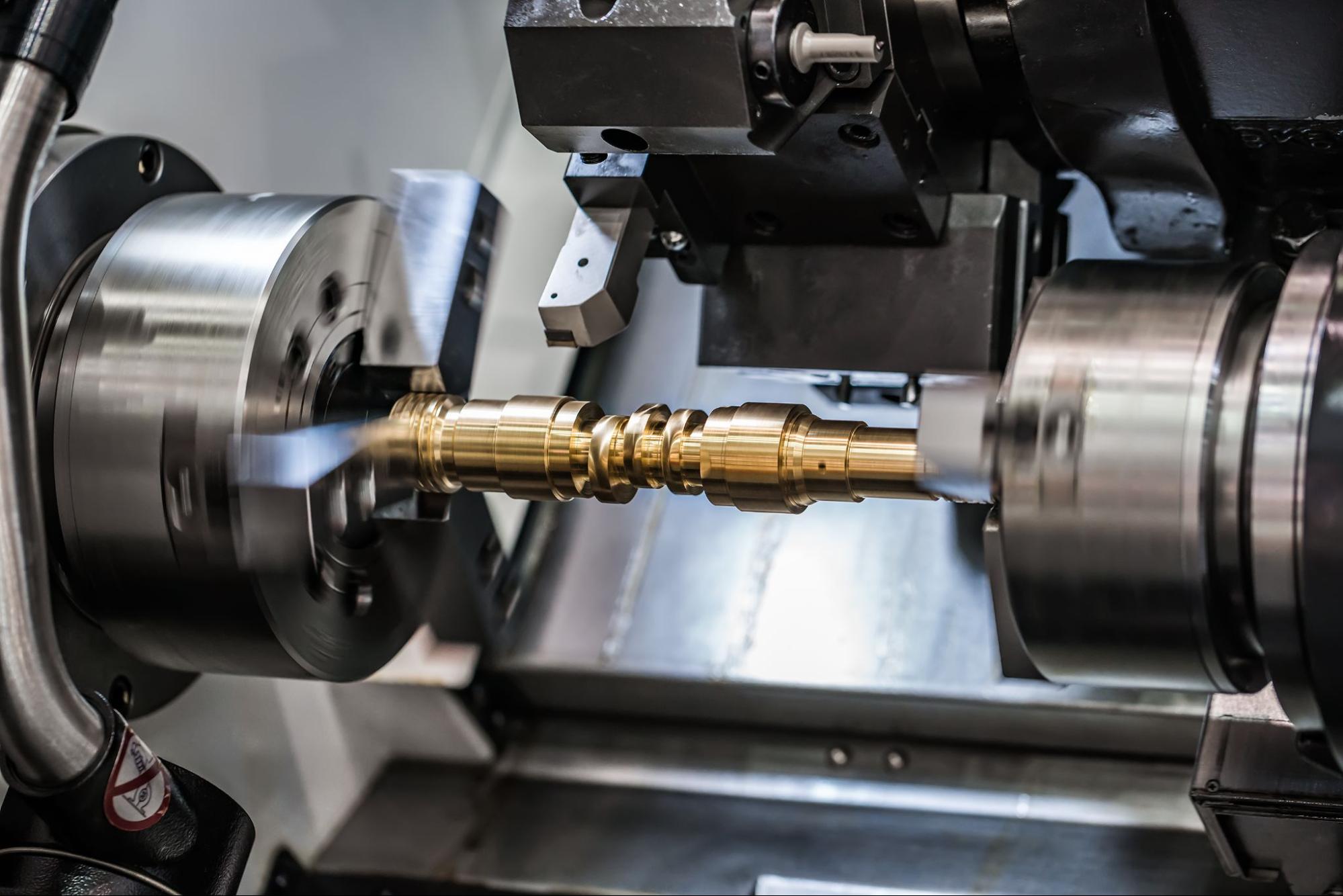CNC Milling vs. CNC Lathe: Understanding Their Difference

Exploring the world of manufacturing or machining often involves encountering the terms CNC milling and CNC lathe. These processes are fundamental within the realm of computer numerical control or CNC machining, with distinctive capabilities and applications.
In this article, we’ll look into the key differences between CNC milling and CNC lathe operations, providing you with a clear understanding of each technique.
What is CNC Machining?
Before diving into the specifics of CNC milling and CNC lathe, let’s start with a brief overview of CNC machining. In a nutshell, CNC machining is a manufacturing process that utilizes computer-controlled machinery to precisely remove material from a workpiece, shaping it into a desired form. It has revolutionized the manufacturing industry by enabling high precision and efficiency in producing intricate parts and components.
CNC Milling: The Basics
The Process
CNC milling is a subtractive manufacturing process that primarily involves removing material from a workpiece by rotating a cutting tool. This cutting tool, known as an end mill, has multiple teeth that can cut into the workpiece from various angles. The workpiece is securely clamped in place, and the CNC milling machine precisely moves the end mill to create the desired shape.
Related: A Guide to What CNC Milling is All About
Key Characteristics
- 3D Shaping
CNC milling excels at producing complex 3D shapes and contours. It’s ideal for parts with intricate geometries and curved surfaces.
- Multi-Axis Machining
CNC mills can have multiple axes, allowing for versatility in cutting from different angles and orientations.
- Versatility
CNC milling can be used with various materials, including metals, plastics, and composites.
Common Applications of CNC Milling
CNC milling is commonly used in the production of:
- Precision mechanical parts
- Prototypes
- Custom components
- Aerospace and automotive parts
CNC Lathe: The Basics
The Process
CNC lathe, on the other hand, is a machining process that involves rotating a workpiece while a cutting tool, often a single-point tool, is applied to shape the material. The workpiece is held in a chuck and rotates on its axis, allowing the cutting tool to remove material in a cylindrical fashion.
Key Characteristics
- Cylindrical Shaping
CNC lathe is ideal for producing cylindrical or symmetrical parts. It excels at tasks like turning, facing, and threading.
- Single Axis
Typically, CNC lathes operate with a single axis, making them more suitable for parts that do not require complex 3D shapes.
- High Precision
CNC lathes can achieve extremely high levels of precision, making them suitable for parts with tight tolerances.
Common Applications of CNC Lathe
CNC lathe is commonly used in the production of:
- Shafts and axles
- Bolts and screws
- Bushings and bearings
- Simple cylindrical parts
Key Differences Between CNC Milling and CNC Lathe
Now that we’ve looked at the basics of CNC milling and CNC lathe, let’s highlight the key differences between these two machining processes:
- Geometries and Shapes
CNC milling is versatile and excels at producing complex 3D shapes, while CNC lathe is primarily used for cylindrical or symmetrical parts.
- Number of Axes
CNC milling machines can have multiple axes (3, 4, or 5 axes), offering greater flexibility, whereas CNC lathes typically operate with a single axis.
- Material Compatibility
Both processes can work with a variety of materials, but CNC milling is better suited for a wider range of materials due to its multi-axis capability.
- Precision
CNC lathe is known for its high precision and is often used for parts with tight tolerances, whereas CNC milling can also achieve precision but is chosen for its versatility in shape complexity.
Which One Should You Choose?
Now that you understand the key differences between CNC milling and CNC lathe, the next question is: which one should you choose for your specific manufacturing needs? Here are some guidelines to help you decide:
- Consider the Complexity of Your Project
If your project involves complex 3D shapes and contours, CNC milling is likely the better choice.
- Parts
For parts that are primarily cylindrical or symmetrical, CNC lathe is the way to go.
- Precision Preference
If precision is of utmost importance and your parts require tight tolerances, CNC lathe is a strong contender.
- Flexibility of Choice in Materials and Shapes
If you need versatility in terms of materials and shapes, CNC milling might be the more suitable option.
To sum it up, CNC milling and CNC lathe are two distinct machining processes, each with its own strengths and applications. CNC milling is the go-to choice for intricate 3D shapes and versatile material compatibility, while CNC lathe shines in precision and cylindrical part production.
Learning more about their differences can help make an informed decision when it comes to selecting the right machining method for your specific project. Whether you choose CNC milling or CNC lathe, both play crucial roles in the world of manufacturing, contributing to the creation of countless products we use every day.
Looking for quality CNC milling and CNC Lathe in the Philippines? Contact us today to learn more about our products!


